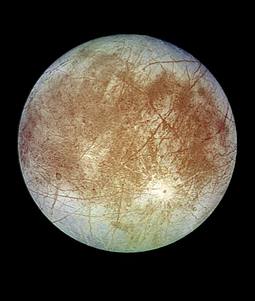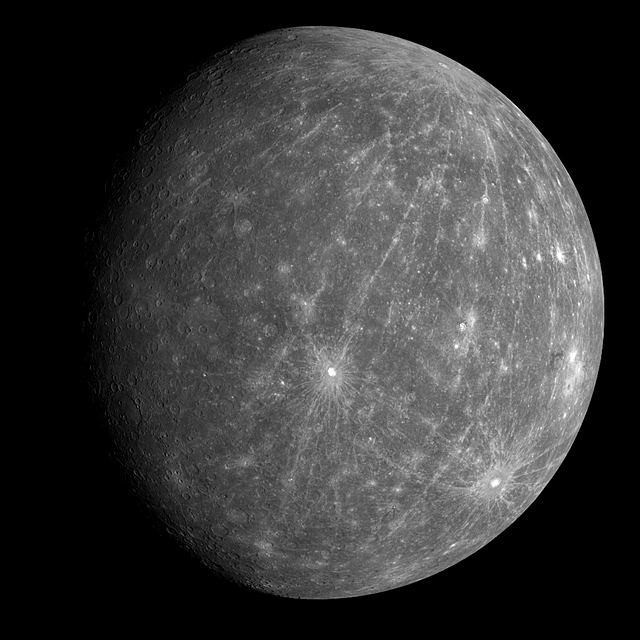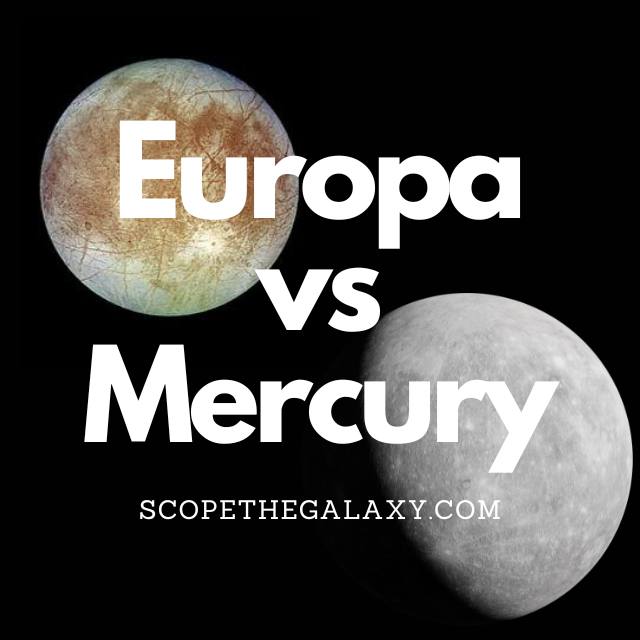*This post may contain affiliate links. This means we may make a commission if you purchase an item using one of our links*
The main differences between Europa and Mercury is that Europa is a the 4th largest Galilean moon that orbits Jupiter whilst Mercury is the closest planet to the Sun, Mercury is the larger of the two with a diameter of 4,879km whilst Europa’s is 3,121.6km and Europa has ice water on its surface whereas Mercury is made of iron and silica rocks.
There are numerous other differences between the two so continue reading for a more detailed look at each celestial body below.
What Is The Moon Europa?
Table of Contents

Europa is the smallest of the Galilean moons, first discovered on 8th January 1610. The surface of this icy world is frozen, but scientists believe a watery ocean could lie beneath the surface. And in 2012, researchers found a possible water plume in the Southern polar region of Europa.
This research is yet to be confirmed; still, it gives us reasonable grounds to hypothesize that water could exist on this icy moon.
Estimates place Europa at around 4.5 billion years old (the same age as its planet, Jupiter), and its average distance from the Sun is approximately 780 million km.
It has a diameter of 3,121.6km, which makes it larger than pluto but smaller than the Earth’s moon, and the maximum temperature is a chilly -160 degrees Celsius. In regards to mass, it measures in around 4.8 × 10^22 kg.
Europa takes three-and-a-half days to orbit its planet at an average distance of 670,900km, and it is tidally locked, meaning the same side of the moon always faces Jupiter.
Among the fascinating features of this ice moon is its incredibly reflective nature. The icy crust of this body provides a light reflectivity of 0.64 – the highest of any moon in the solar system.
Data from the Galileo spacecraft suggests that Europa is composed of an iron core, rocky mantle, and silicate rock (a similar composition to Earth).
The moon’s surface is covered in cracks, which many theorize could result from tidal currents beneath the surface. It is this potential of water – and of life – that keeps astronomers so interested in this moon.
Europa might be small, but astronomers estimate it holds two to three times more water than the Earth. In addition, this moon possesses the essential elements for life, such as carbon, oxygen, hydrogen, and nitrogen.
There may be no solar energy on this moon, but hydrothermal vents could provide energy, and tidal heating from Jupiter could provide a heat source and keep the moon stable enough for life to form. In addition, the liquid ocean is well protected from radiation from thick, icy surfaces.
What Is The Planet Mercury?

Mercury is the planet closest to our Sun and would fall under the terrestrial planet moniker. Out of the 8 main line planets Mercury is also the smallest, coming in at 4,879km.
This planet is known for having its fair share of craters, which is mostly down to its thinner non protective atmosphere that is unable to stop interstellar debris from striking its surface.
Despite its close proximity to the Sun, Mercury is not the hottest planet in our solar system but, it does come in second, just behind Venus. It’s surface temperature is around 430 degrees on the upper end with the average temperature around 167 degrees Celsius whereas its core is far hotter at around 1,600 – 3,000 degrees Celsius.
Due to it close proximity to our local star, Mercury is unable to sustain a moon around its orbit and even has a very unique rotation around the Sun where it has 3:2 orbital resonance with the Sun.
As for how long it takes for the planet to rotate around our yellow dwarf star, its the shortest time period of 88 days for obvious reasons, whilst a single day on the planet takes 58.65 Earth days to complete. Its axial tilt is only 2 degrees to the right, making it amongst the straightest planets in the solar system too.
Similarities Between Europa And Mercury
Europa and Mercury do share a few similarities, which in this case includes the following:
- Both have a hotter central core.
- Both have a rocky, terrestrial surface.
- Both are spherical in shape.
- Neither have rings surrounding them.
- Both are part of the same solar system
- Neither have other natural satellites orbiting them.
- Both have a virtually non-existent atmosphere.
Differences Between Europa And Mercury
As for the differences between the two, they include the following:
- Europa is a natural satellite that orbits Jupiter whilst Mercury is a normal planet that only orbits the Sun.
- Europa is tidally locked to Jupiter whilst Mercury orbits the Sun in a 3:2 orbital resonance.
- Mercury is the bigger of the two with a diameter of 4,879km whereas Europa has a diameter of 3,121.6km.
- Mercury orbits the Sun in 88 days whilst Europa orbits the Sun in roughly 12 years just like Jupiter but, an orbit around Jupiter only takes 3.55 days.
- A day on Europa is 3.5 days whilst a Mercury day is 58.65 days.
- Europa’s axial tilt is 0.1 degrees whilst Mercury’s is 2 degrees.
- Europa’s surface is full of water ices whilst Mercury is extremely dry consisting mostly of rocks and craters formed from meteor impacts.
- In regards to temperature Mercury is averaging around 167 degrees Celsius whereas Europa has an average temperature of -160 degrees Celsius.
- Europa’s mass is 4.8 × 10^22 kg whereas Mercury’s mass is 3.285 × 10^23 kg.
- Mercury’s refelectivity rating is similar to the Moon’s at 0.119 wheres Europa’s is 0.64.
- Mercury’s gravity is 3.7 m/s² whereas Europa’s is 1.315 m/s².
- Europa’s density is 3.01 g/cm³ whereas Mercuy’s density is 5.43 g/cm³.
Summary
Mercury and Europa do not share a lot of things in common, besides the fact both are terrestrial entities and neither have other celestial bodies orbiting them.
Whether it comes to size, temeprature, desnity, gravity and beyond, Mercury and and Europa are simply very different from one another.

